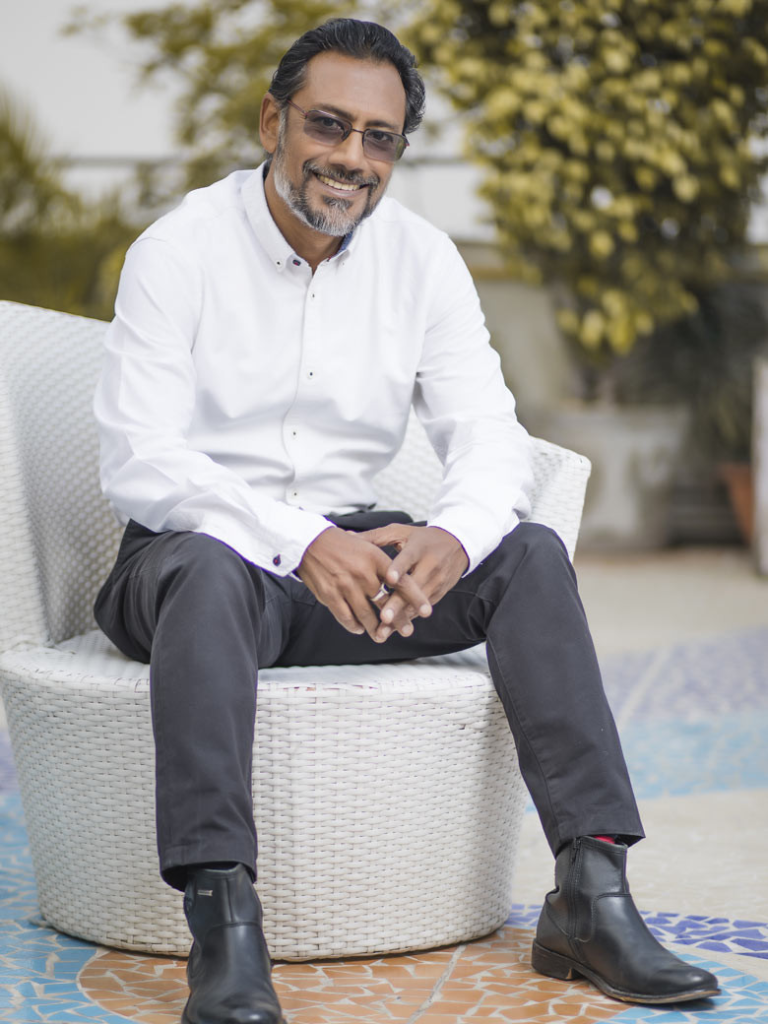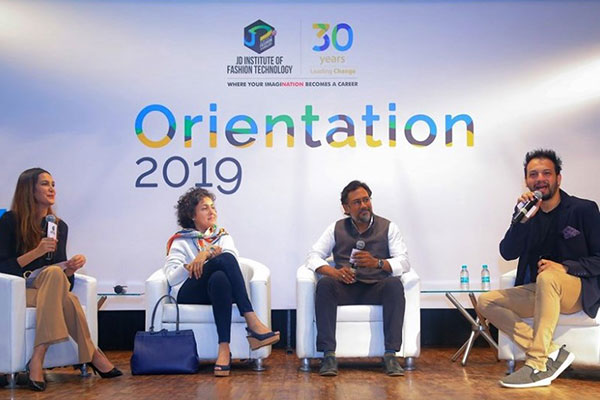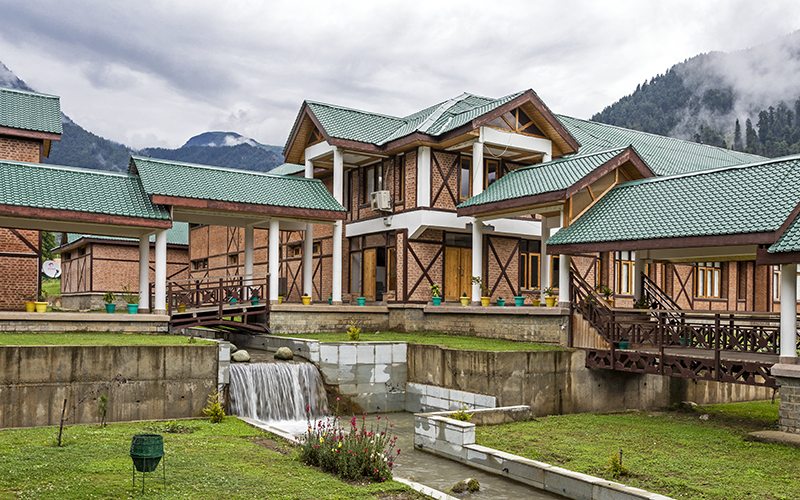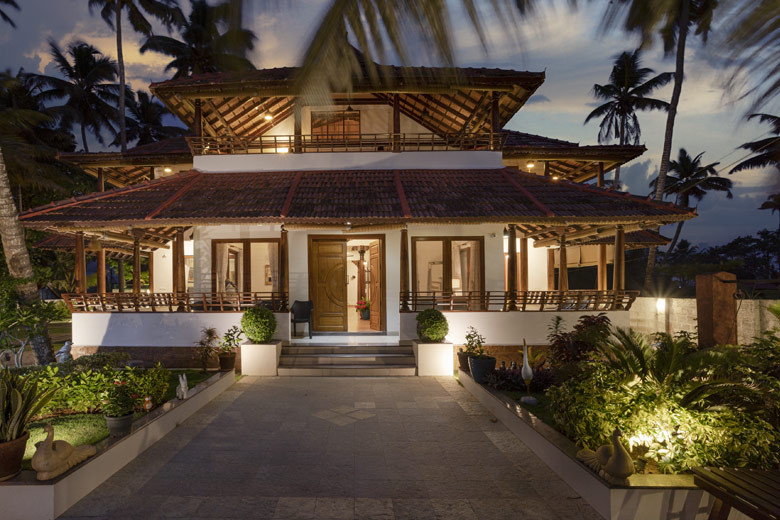

Image Source: Designconsortiumindia.com
Ar. Nilanjan Bhowal (Founder, Design Consortium) in conversation with Director Ms. Akshara Dalal
“Design is nothing but putting habitat in Nature”
JD Institute of Fashion Technology, one of the leading design institutions of India hosted another interactive webinar session with people from the fashion & lifestyle fraternity having great exposure and expertise. As part of our continuous commitments of pushing the boundaries of conventional education, making the process of learning more fulfilling, intriguing and holistic all our students, we have recently undertaken a series of web-sessions featuring prominent personalities including renowned designers, industry leaders and experts in post-pandemic world.
Amid the unsettling atmosphere of hopelessness and profound uncertainty triggered by the pandemic as well as the rapidly disintegrating natural world around us, made worsened by ‘global heating’, incorporation of sustainable principles, design features is no longer just an luxurious alternative. Rather it has become a necessity.
Image Source: Designconsortiumindia.com

Our mission again is focused on uplifting the students and motivating them to keep at their creativity and imagination. With over 30 campuses PAN India JD Institute puts its foot forward to keep the students mentally engaged in a thought-provoking environment. JD Institute conducted a webinar with Mr. Nilanjan Bhowal on Sustainability in Design. The motto of the webinar was to educate and inspire students to expand the wings of imagination and sore high in their own journeys. Mr. Nilanjan Bhowal practices as the Principal Architect at DESIGN CONSORTIUM since. With an experience of 20 years and counting his projects include cities like Pahalgam and Gulmarg in Kashmir in the north to Cherai beach in Kerela in the South, to Goa and Mumbai in the west to Kolkata, Bhubaneshwar & Manipur in the East. He is a Gold-Medallist in Architecture from Institute of Environmental Design, Gujarat, he earned Masters in Architecture from Katholieke University, Belgium and post-graduate specialization in energy-efficient architecture from Istanbul Technical University.

The session detailed about the major impact the natural world had on the architect that started taking shape when he visited his native place in West Bengal for the first time and over many more subsequent trips. From the smell of the fresh earth after the first shower of the season, the sound of the raindrops falling on a thatched roof to the sensation of heavily greenish pond water against his bare skin to the particular way the sun would cast it’s magnificent shadows on the wall slipping onto the floor on a late afternoon- the deep intimacy that he shared with the natural world from his early childhood days would ultimately dictate his life long quest of exploring architectural expressions through the eyes of nature. And an innocent childhood obsession soon turned into a celebrated career spanning over three decades following his admission into an architecture school.
His childlike curiosity as well as the tendency to play peekaboo with nature in terms of spatial planning, without compromising it any manner whatsoever, is reflected throughout his architectural career. Perhaps nowhere his love and admiration for the natural world is more evident than the resort project that he had undertaken early in his career in the Jim Corbett National Park. Set up amidst the lush green forest canopy of native tress, it is home to a ‘Machan’/ entrance reception, a dining area and a number of informal, slopped roof, mud walled cottages (with a combined capacity of 50 people) scattered throughout the five acre plot but connected beautifully with narrow, meandering pathways. With an exception of the cafeteria/ dining (only structure with a few concrete structural members) the entire area is designed and built using materials that are hundred percent sustainable, locally sourced and in harmony with nature.From the mud houses, thatched roofs, structural members made of bamboos, sofas (Charpais) constructed with local traditional materials or the use of solar lanterns, or the initiative of leaving every single tree intact/ uncut… the project is a homage to sustainable leisure living at its best, with the least (almost zero) impact on the environment.
Image Source: Designconsortiumindia.com

Restrains : Challenges are part and parcel of any innovative developments and building sustainable infrastructures is no exception. Context, climate, traditions, materials and construction technologies are five fundamental parameters that dictate the construction and execution of any sustainable developments all over the country, according to Ar. Bhowal. With a brilliant demonstration using the failed city of Fatehpur Sikri or the Floods in Mumbai, the architect has attempted to guide our focus towards the often overlooked yet extremely crucial aspects of spatial/ infrastructural developments, i.e., consideration of natural resources and topography, solely emphasising on the lack of thoughtful action in the planning stages, while carrying out development works. Rampant disregard to natural environments or our selective inaction is one of the leading causes of man-made catastrophes. And it would be certainly unwise to continue with our quest of development (irrespective of the scale, whether grand or modest) by turning a blind eye to the context and our fragile ecosystem.
“Eyes want to touch & Hands want to Taste”:‘Organitechture’, coined by the architect himself, refers to designing spatial environments that is rooted in context, tradition, locally sourced materials like Jaisalmer stones (but also includes non-traditional materials such as glass as well) in a contemporary incorporating modern technologies.He goes on to explain the importance of texture in design and its extensively explored by his design practice. Daring to look beyond our visual (primary) senses, by incorporating our five senses within the paradigm of design education with, we can further extend our level of intimacy with physical spaces, which can be rather rewarding in certain ways.
Image Source: Designconsortiumindia.com

Retrofitting: There are a number of ways we can make our houses more energy efficient and like selecting materials that have lower entropy, using double glazing on windows and doors, window shades, extended balconies, covering the roof of the buildings with light reflecting tiles/ rooftop gardens or installing cavity walls and solar panels. Reusing refurbished materials whenever possible or utilising waste in reasonable ways we might be able to extend the life span of conventional materials significantly.
Use of Modern technology on mitigating challenges for spatial design in a post pandemic world: The influence of technology can be far reaching specially in a situation like this, where safety and privacy both are respected and maintained efficiently. He highlighted the importance of embracing difficult time and use it in their advantage, exploring the new ways of creating for disaster proof designs. With his detailed presentation of resorts in an earthquake prone zone in Pahelgam, Kashmir and Manali, we get to learn some valuable insights for designing in a disaster prone area like structures made with wooden lattice work and infilled brickwork to provide greater flexibility and also how to use the natural flow of water (adjoining the sites) to enhance the ambience without causing major disruption. In sync the core convictions of sustainable design, both the places aims to connect the occupiers with the natural surroundings in a profound way, emphasising on the tactile and the auditory senses. With the use of recyclable shipping containers for Globus Transitos in Delhi, he pointed out how efficiently we can adapt to newer challenges and still continue with our path of innovation.
He spoke at length about the contributions and impacts the current generation of students as well as fresh graduates should aim to have minimal invasion of the natural world and touching as many lives as possible.